Actinidia can be described as a liana-like plant that has a powerful tree-like stem that is covered with large leaves. There was a time when this plant was widely used for decorative purposes.
However, later on some varieties managed to find fruits with a pleasant taste. As a result, wild actinidia began to be used as a base for breeding fruit-bearing varieties. One of them has become especially popular and widely known even in our country. This is the well-known kiwi.
It can only be grown in a subtropical climate. Actinidia Kolomikta, which has many properties similar to kiwi, appears to be of a slightly different plan. Today, this variety can be grown even in the Russian climate, and the berries are just as tasty and high-quality as that of the popular fruit.
Content
Description and features of actinidia
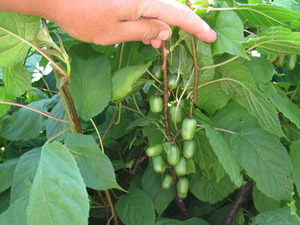 The efforts of the breeders were not in vain - many new varieties of actinidia have appeared that can be cultivated in such harsh regions as Siberia, the Urals, the Moscow region, etc.
The efforts of the breeders were not in vain - many new varieties of actinidia have appeared that can be cultivated in such harsh regions as Siberia, the Urals, the Moscow region, etc.
If the gardener is going to grow actinidia in the suburbs or other harsh regions, then it is recommended to use the Kolomikta variety.
This type of actinidia is not only undemanding to growing conditions, but also characterized by high frost resistance... Therefore, taking care of him will be quite simple.
- During the growing season, the plant acquires the features of a liana, which forms powerful weaving branches, decorated with silky large heart-shaped leaves. Their length usually does not exceed 15 cm.
- As for the color, it is not constant, so the foliage of actinidia looks new at every season. The decorative nature of actinidia is most clearly manifested in autumn: it is at this time that the leaves and fruits create the most spectacular color contrast.
- The flowering phase of actinidia lasts a long time. The first flowers open at the end of May, remaining in this state for 3 weeks. The beauty of actinidia is provided not so much by the original color as by the unusual shape of the flowers.
- During the flowering period, the plant emits a fragrant aroma reminiscent of lily of the valley, jasmine and lilac. During the fruiting period, plants enter at different intervals, however, this usually falls on the period from August to October.
Actinidia varieties
The following varieties are best known in our country:
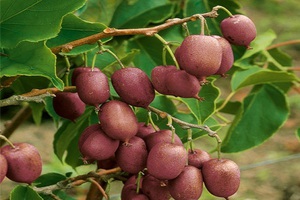 Pineapple Michurina.
Pineapple Michurina.- Large-fruited.
- Clara Zetkin.
- Apricot.
- Gummy Sweets.
- Onion.
Among the existing varieties of actinidia, species of particular interest to gardeners are Arguta, Kolomikta, Polygama... Therefore, they often have similar names.
These actinidia varieties not only look beautiful, but are also very fruitful, bringing in many berries every season, which have good flavoring properties and are rich in vitamin C.
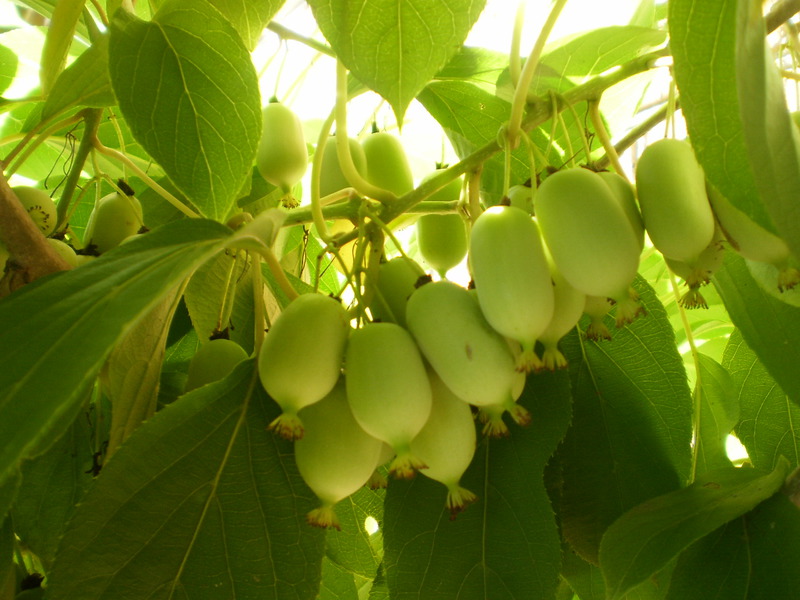
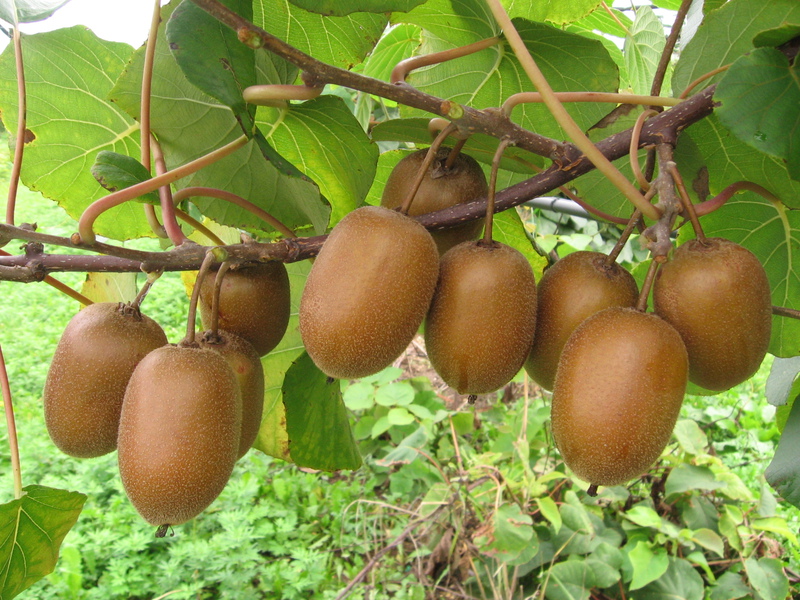
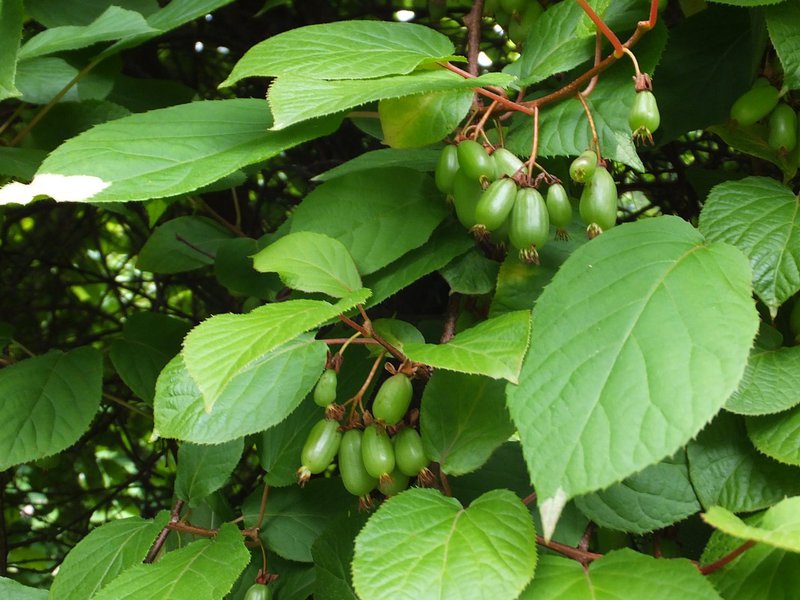
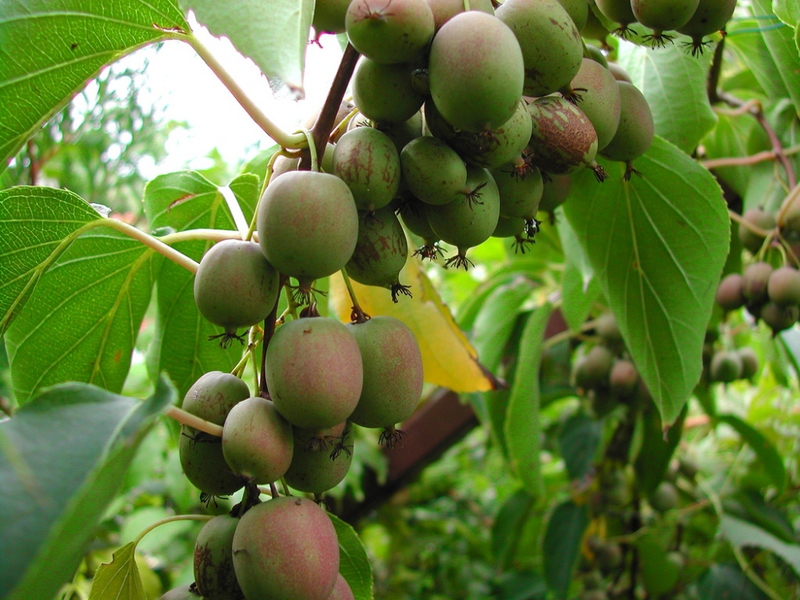
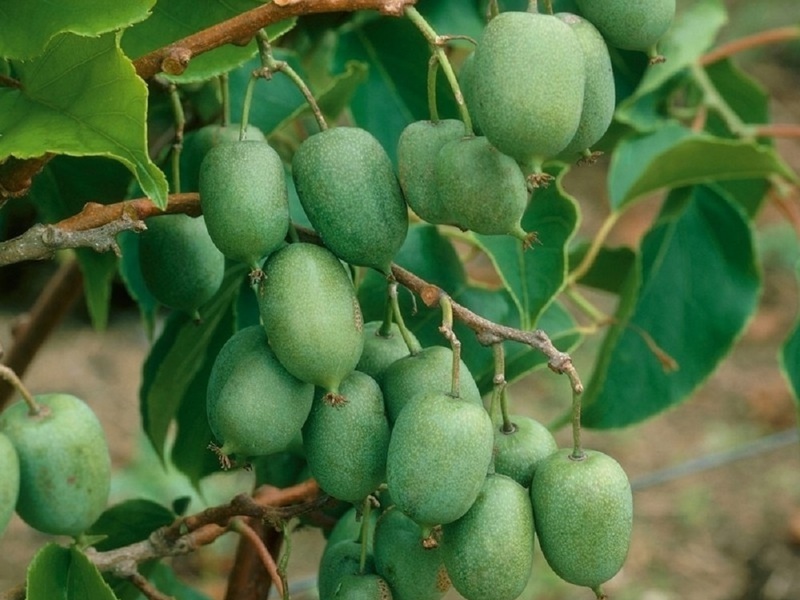
Actinidia Kolomikta... Among all the varieties, this one is the most suitable for growing in the conditions of the Moscow region and the northern regions. He is not afraid of frosts down to -10 degrees.
It is very simple to care for this plant, so even a non-specialist can cope with this task. In autumn, small fruits ripen, reaching a length of 2.5 cm.
Fruit weight is no more than 5 g. They have a sweet and sour taste. One bush can bear up to 5 kg of fruit annually. Ripening of berries occurs in portions, with a delay in picking, they shatter.
Actinidia Arguta... Although this variety is usually referred to the group of cold-resistant crops, however, it can tolerate frosts not lower than -40 degrees.
At the same time, against the background of Kolomikta, this variety stands out with larger fruits, whose weight is 10 g. One actinidia plant can bring up to 10 kg of berries per season. The fruits that have reached the state of technical maturity remain on the branches until frost.
Actinidia Polygamy... This variety is even less cold-resistant, since it can tolerate temperatures of at least -35 degrees. Most often grown varieties such as Apricot, Perchik, Start, Krasavitsa.
One of the peculiarities is that the berries do not crumble after ripening. Possesses excellent taste properties, at the time of ripening it changes its usual green color to orange.
Choosing a place for growing actinidia
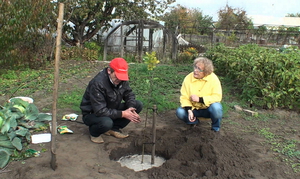 Having decided to grow actinidia on his site, the gardener first of all should decide on a place for planting. It is advisable to provide a support for the plant, which can be used as an arch, fence or gazebo.
Having decided to grow actinidia on his site, the gardener first of all should decide on a place for planting. It is advisable to provide a support for the plant, which can be used as an arch, fence or gazebo.
In the process of growth, actinidia forms a powerful root system, which can negatively affect neighboring plantings. Because of this, actinidia is recommended place as far away as possible from fruit trees and shrubs.
It should be grown no closer than three meters in relation to neighboring plantings. As a protective measure, you can use slate or tin, which is dug into the ground around the perimeter of the placement of plants.
It is advisable to plant actinidia in the spring. In the middle zone of our country, a favorable moment for this appears already in April. Liana grows best on the lungs, fertilizer-rich soils.
However, do not count on abundant flowering and fruiting when planting on clay and damp soils. Stagnation of moisture negatively affects the development of the plant, which leads to the soaking and death of the rhizome.
In such areas, it is mandatory have to arrange drainage... It is desirable that the pits be prepared in the fall. Plants should be placed no closer than 1.5 m from each other. For 5-7 female plants, there must be at least one male.
Actinidia: planting and care
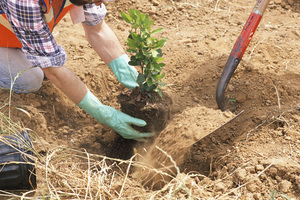 Before planting, it is necessary to prepare a hole, the diameter and depth of which must be at least 60 cm. First, the bottom must be filled with drainage, for which gravel, expanded clay, crushed stone or river sand is used.
Before planting, it is necessary to prepare a hole, the diameter and depth of which must be at least 60 cm. First, the bottom must be filled with drainage, for which gravel, expanded clay, crushed stone or river sand is used.
They are laid in a layer of 15 cm.After that, in a pit spread the potting mix, preparing it from half a bucket of humus, sod land, a small amount of ash.
The cultivation technique of actinidia is a lot like grapes. The plant responds well to frequent watering, however, moisture should not stagnate.
An excellent effect is provided by spraying the leaves, which must be practiced in the morning or evening. Actinidia grows better if under a bush loosen the soil regularly.
However, you need to be very careful here, as the root system is close to the surface. The first time the soil is loosened after the snow cover disappears in early spring. If all the measures for the care of actinidia are followed, you can get the first harvest in five years.
Pruning and shaping vines
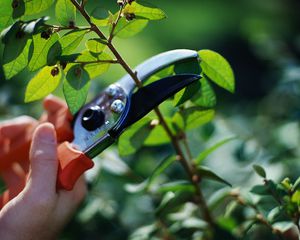 As a rule, plant pruning is planned in the fall.A similar decision is correct due to the fact that in this case it is possible to avoid lacrimation of the vine, and as a result, the death of the shoots.
As a rule, plant pruning is planned in the fall.A similar decision is correct due to the fact that in this case it is possible to avoid lacrimation of the vine, and as a result, the death of the shoots.
Pruning in the spring is possible only when there is an urgent need for it. And it's best to do this. before the juice starts moving... Usually this operation is planned for the end of February or beginning of March.
There are several purposes for which actinidia is pruned in the spring:
- liana formation;
- removal of defective shoots, for example, with signs of disease;
- thinning thickened areas.
It is necessary to remove shoots 2 cm above the bud, using only clean and sharp instrument... The cut should be smooth without any defects such as burrs, splits or bends.
When forming a plant, you can take a two-armed grape pattern as a basis. Then, for at least 10 years, it will bring a high yield without the need for re-pruning for a long time.
If the plant is fan-shaped, then it will have to be done every 3-4 years update the bush... In this case, the first pruning is carried out in the second year of the plant's life.
How to propagate actinidia
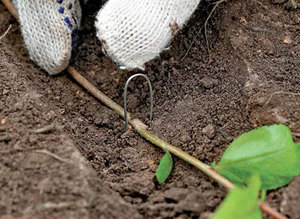 There are several ways to propagate actinidia: cuttings, layering and seeds. The latter method is used the least frequently. This is due to the fact that in half of the cases, male plants grow from germinated seeds.
There are several ways to propagate actinidia: cuttings, layering and seeds. The latter method is used the least frequently. This is due to the fact that in half of the cases, male plants grow from germinated seeds.
Moreover, it is impossible to predict in advance what actinidia will be. Only specimens at the age of 5–7 years enter the fruiting phase. Therefore, if you do not know if the plant is male, then you can find yourself in a rather unpleasant situation.
Reproduction by layering... In order to avoid possible difficulties during reproduction, it is recommended to use layering. The first step is to select a healthy, well-developed vine, which needs to be dug in in May or early June.
In the fall, it turns into a fairly high-quality seedling with a powerful root system. but experts recommend leave them until early spring, so that at this time you can prune the vine without causing serious injury to the plant.
Propagation by cuttings and advice from experienced gardeners
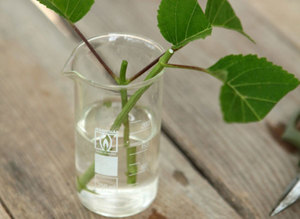 For propagation of actinidia by cuttings, it is recommended to choose green branches. They have a fairly high survival rate of 90%. The situation is much worse with lignified cuttings, which take root in no more than 60% of cases.
For propagation of actinidia by cuttings, it is recommended to choose green branches. They have a fairly high survival rate of 90%. The situation is much worse with lignified cuttings, which take root in no more than 60% of cases.
Cuttings selected for planting should be no more than 15 cm long.They are harvested at the end of June, after which they are planted in a specially prepared area: the place should be in the shade and constantly moisturized.
Before planting, which is carried out to a depth of 50 cm, the pit must be filled with a mixture based on sand and peat, taken in a 2: 1 ratio. Usually, the complete formation of the root system takes no more than a month. As a result, the first young branches can be obtained in the fall.
For ordinary gardeners, the actinidia plant seems to be little known, although in reality this is not entirely true. There is a variety that almost every one of us has heard about. It is about kiwi, which is a fruiting variety of actinidia.
Naturally, it can only be grown in subtropical conditions. However, for the climate of our country, there are corresponding varieties of actinidia, which thrive even in such harsh regions as the Moscow region and Siberia.
Right selection of varieties and adherence to agricultural technology growing actinidia allows you to count on the fact that with appropriate care, actinidia will not only become a bright decoration of the summer cottage, but will also be able to please the gardener with delicious fruits.
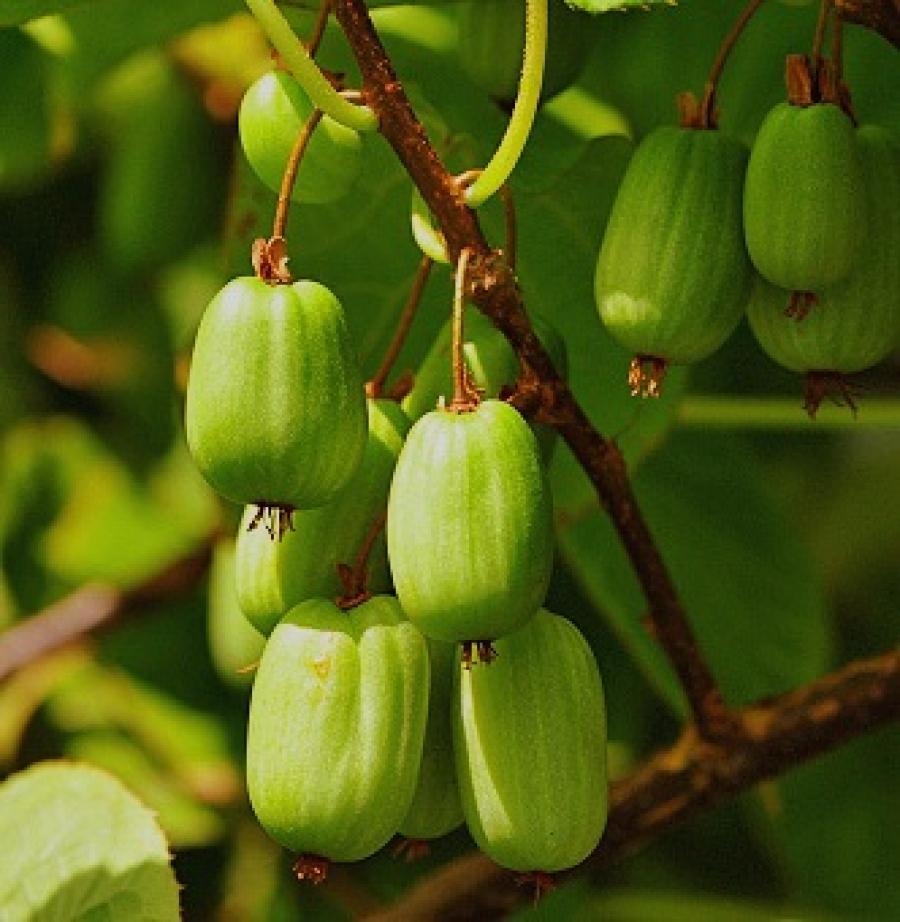
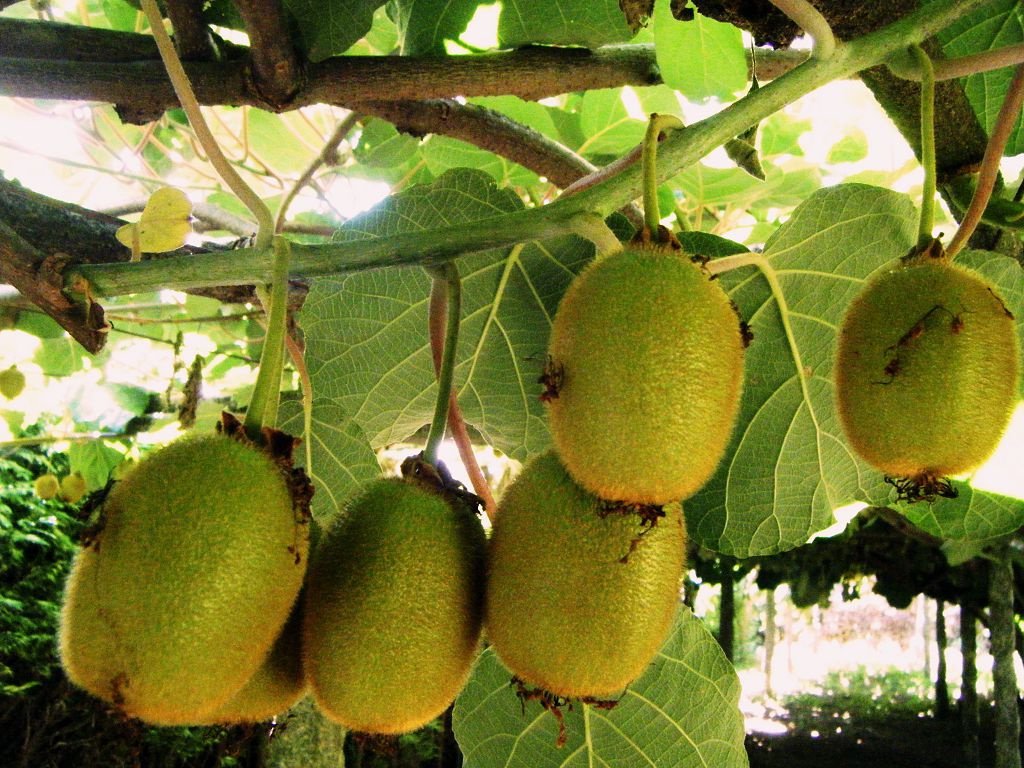
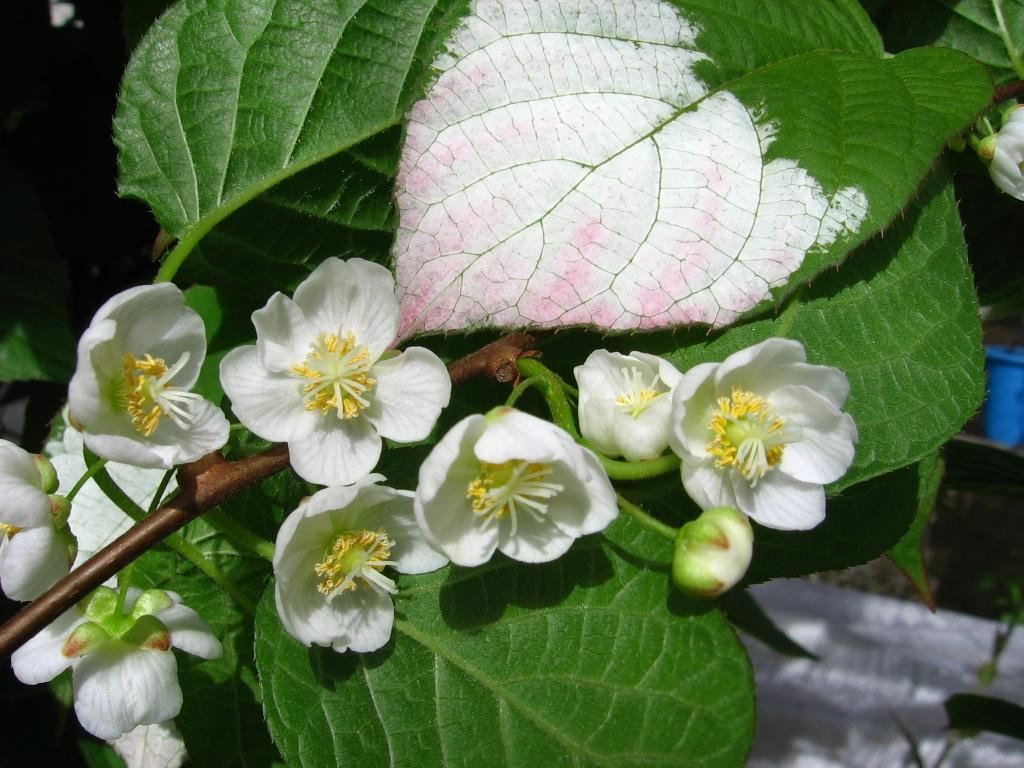
1 comment